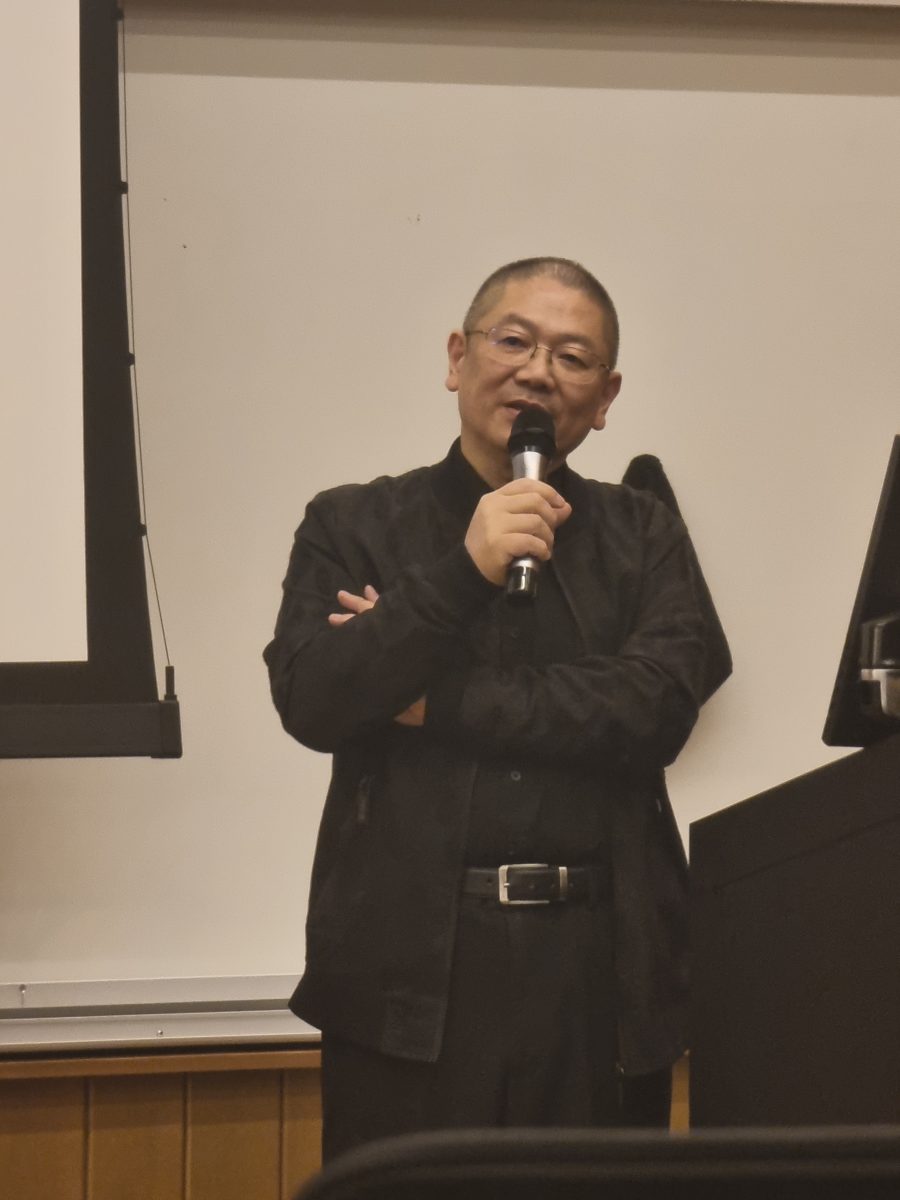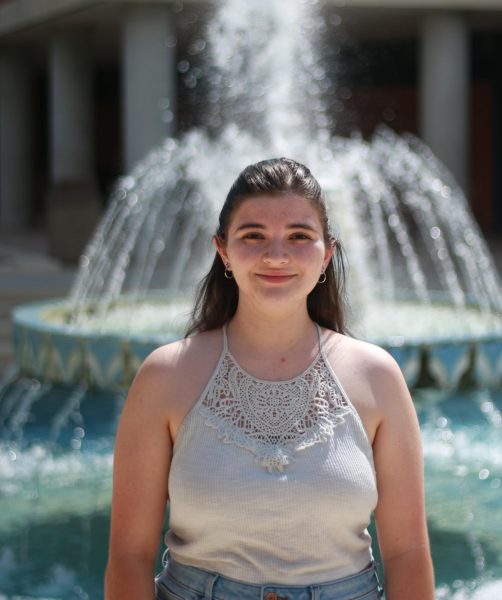On Monday, Chinese-American artist Lampo Leong lectured at Trinity in the Chapman Auditorium about his decades-long creative career. He showed a visual history of his work and discussed in detail the process and inspiration behind his art.
Leong discussed his early inspirations of traditional Chinese calligraphy and landscape painting, how he blended that style with Western oil painting and photography and how his identity influenced his art. Through the influence of integrating technology, his art style hopes to portray raw forces and energy that seem three-dimensional even though they are on a two-dimensional canvas.
“And as a Chinese-American artist, we always wanted to incorporate two different cultures, bringing them together. Technically, it’s actually very difficult because each media has a particular material and particular look,” Leong said. “So different that you can hardly bring those two things together until the computer, which can actually help me to transfer some images from one medium to another medium.”
He also stated that he aims to recreate the energy of movement in his experiments with ink and water. These artistic experiments are Chinese calligraphy and watercolor, which he utilizes to create cosmic ink patterns that attempt to recreate the immensity of space.
“I’m talking about the forces of nature, not nature with maybe just trees and flowers, but the forces of nature which are kind of abstract,” Leong said. “I know what the forces of nature look like and that’s the kind of essence that I want to capture from the energy from nature and also the creation of the universe. Those are the elements I want to capture.”
Zhaoxi Liu, associate professor of communication, is a friend and colleague of Leong. Liu described Leong’s dedication and attention to detail, which she had observed while watching him work.
“Right now his work is trying to capture that movement of just one drop of ink in water, capture the movement and show the really detailed texture and the movement of the ink spreading and then he creates art out of that,” Liu said. “So, he has moved from the stroke level of one Chinese character and he’s been going deeper and now he’s at a microscopic level.”
Another notable aspect of Dr. Leong’s work is his use of multimedia in large gallery spaces and in dance performances, which both utilize his work alongside music, the physical space of a room and the physical bodies of the dancers. These aspects all coincide with his study of ink and watercolor and how they can interact with the world outside of the canvas.
Leong also teaches art at the University of Missouri and formerly taught at the University of Macau in Macau, China. He has won several awards, including Best of Show at the 42nd Sumi-e Society of America International Juried Exhibition, a Gold Medal at the XV Exposição Coletiva dos Artistas de Macau and the Front Cover Award in New Art International published in New York. Throughout his forty-year-long career, he is still making new pieces.
Note: This story previously stated that Lampo Leong currently teaches art at the University of Macau in Beijing, however, he has retired from this teaching position at the University of Macau in Macau, not Beijing. We sincerely apologize for this factual error.








